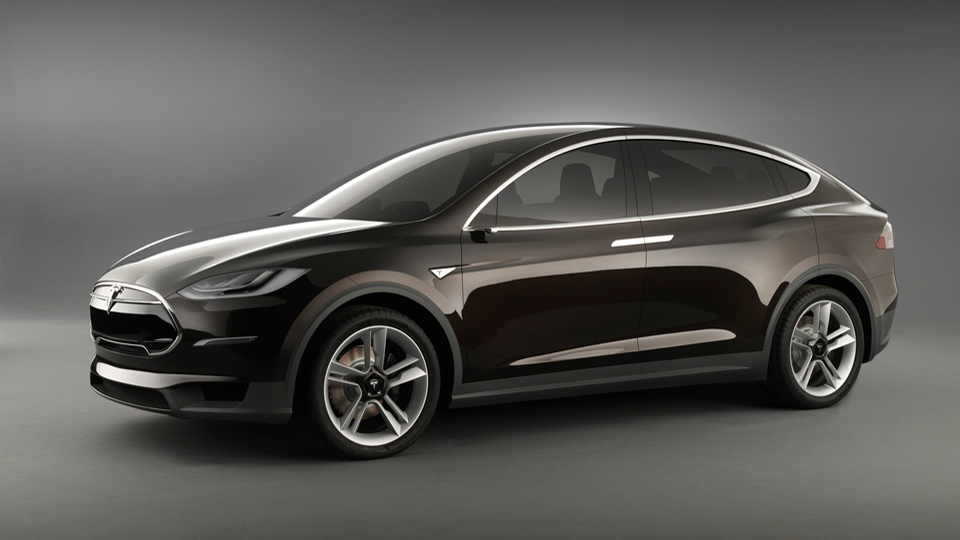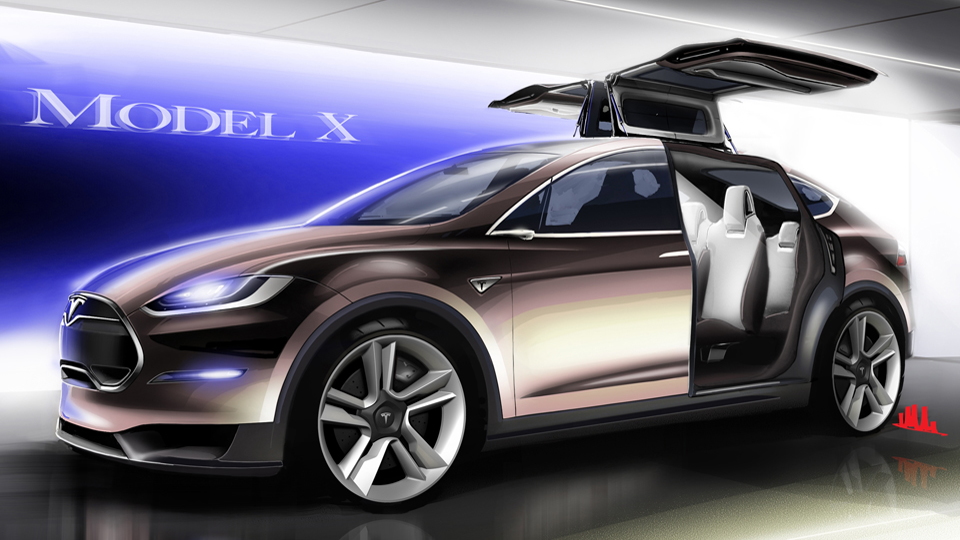Sharing parts between models is a common practice in the auto industry, though it can be taken too far--just ask the "old" General Motors. But in Tesla's case, sharing 60 percent of the parts between the Model S and Model X makes great sense.
As a startup, sharing parts between models means more efficient manufacturing, and since that's the main hurdle between Tesla and commercial success at this point--their designs are amazing, and electric cars are widely recognized to be one of the best near-future technologies--leveraging work on the Model S sedan for the Model X crossover will, possibly, make clearing that hurdle a bit easier.
But really, it's the other 40 percent that makes the Model X remarkable. Seating for seven plus their luggage, despite a fastback roof profile? Yep, it's got it. While it offers equal or better performance than the sedan, the crossover weighs about 10 percent more--in part thanks to its unique rear doors.
Called "falcon wings" by Tesla and Elon Musk, the doors don't just open upward like traditional gullwings; they fold in on themselves, retracting like the wings of their namesake. This makes operation of the doors possible in tight parking spaces. But why go falcon at all?

Tesla Model X
Musk says it's to offer the utility and access of a minivan while maintaining a crossover or SUV-like form factor. What Musk didn't say, but which must be a reason, is that they're just cool.
Expected to cost around $60,000-$90,000 before tax credits, much like the Model S, the Model X offers similar performance, too. Musk says the standard version of the Model X crossover gets to 60 mph in 4.4 seconds. An upcoming Performance model will be even quicker, though the Model X will only be available with the 60 kWh or 85 kWh battery packs, skipping the least-expensive 40 kWh battery pack sold in the Model S. The Model X will also be available in all-wheel drive or rear-wheel drive.
Inside, there are four bucket seats, and the same 17-inch capacitive touch-screen interface as found in the Model S. The interior design elements also look much the same, with contoured surfaces, premium materials, and modern themes at every turn.
Thus far, however, the Model X is just a prototype. Continued development and validation will likely have to be done, though with much of the underpinnings already tested for Model S use, it won't take as long to get the Model X to market. Tesla hasn't specified a production start date, but says it will be on sale in 2013.
_______________________________________





